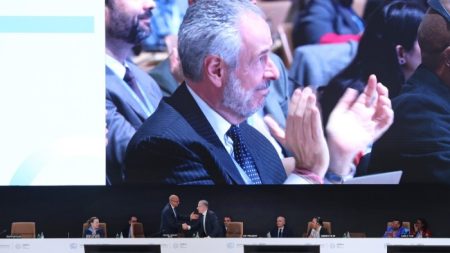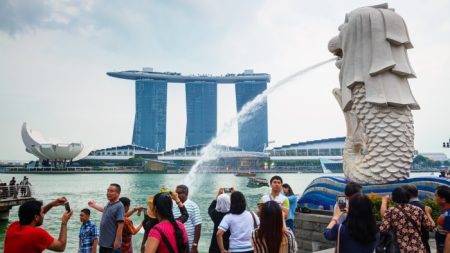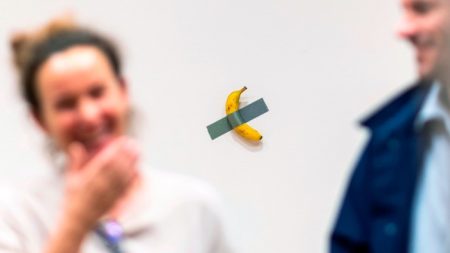I.
On the evening of July 29 2011, in the Quebrada de San Lorenzo, a subtropical nature reserve in northern Argentina, a tourist was admiring the view. The man was standing with his family where he could see across the muggy, green valley with its broadleaved Tipuana and Cebil trees, all the way down to the sprawl that made up Salta city. He excused himself and trudged into the undergrowth to urinate. He was vaguely aware that pumas and bears were known to lurk nearby and didn’t want to be long. Then he noticed something a few metres away. Clothes. Hair. A hand.
“There’s a dead person in there! There’s a woman’s body in there!” he shouted as he leapt out of the bushes. His face was ashen, his voice tremulous. He’d seen a woman with long, dark hair sprawled facedown in the underbrush. She wore a pullover and black trousers. Another visitor heard the man’s cries and bolted up the slope, through the jagged bushes and squeaky, damp leaves. It didn’t take him long to confirm the discovery. The woman looked like she hadn’t been dead long.
The two men stumbled down the valley to inform authorities. By 7.45pm, a search team composed of police officers and park attendants began searching the area. They couldn’t immediately find the body because of the encroaching darkness, so they called for back-up. Firefighters and a K9 unit arrived and, just over an hour later, they found a body lying facedown just 25 metres from the viewpoint. At 11.15pm, a second woman’s body was discovered. She was lying on her left side, wearing torn trousers similar to the first victim and black trainers. An entry ticket to the nature reserve was found among the victims’ belongings. Checking park records, the police noted that visitors from France had entered on July 15 at 4.23pm.
Some officers wondered whether the bodies should be left in situ so forensic pathologists could work in daylight. Maybe then they’d be able to find more clues. But that order was countermanded by the investigating judge. (In Argentina, judges are often involved in criminal investigations.) The bodies were to be transported to the morgue and prepared for autopsy immediately. They were zipped up in plastic bags with their hands wrapped to preserve any potential evidence.
The forensic pathologist began the autopsies at 4.30am on July 30. Her first observation was that the bodies were well preserved. Animals had not got to them, nor were they in an advanced state of decomposition. Her second conclusion was that both women had been shot. The first was killed by a bullet to the head and the second woman by a shot that pierced her lung. Both women had been raped and had died no more than 72 hours before being found.
The murders put local investigators on edge. They anticipated international media attention, but their anxiety was heightened because a young Argentine designer had vanished in Salta just days before. Salta is a medium-sized city with a population of 700,000 people. It is an entry point for Argentina’s cocaine trade, but murder rates were relatively low, certainly below those seen in the country’s capital Buenos Aires. The double homicide of two foreign women was unheard of.
The immediate task was identifying the bodies. The following day, Néstor Píccolo, the lead investigator, and his team visited the hostel where the women had been staying. They discovered that French students Cassandre Bouvier, 29, and Houria Moumni, 24, hadn’t been seen since July 14. Passport photos in their room appeared to match the two bodies in the morgue.
Investigators later discovered that Cassandre and Houria had met in Paris at the Sorbonne’s Institute of Advanced Latin American Studies. They’d developed an interest in various regional political and social issues and decided to travel together through South America. Their most recent destination was Salta.
II.
The first thing Jean-Michel knew was that his daughter hadn’t arrived in Buenos Aires. Cassandre was due to meet a friend there on July 30 but hadn’t turned up. There had been no call or text to advise of the delay. In Paris, Jean-Michel called the Crisis Centre at the Ministry of Foreign Affairs, which dealt with such problems. They might help, he thought. The person on the other end of the line assured him that they’d “call back as soon as they knew something”. At first, Jean-Michel was calm, anaesthetised by denial. Cassandre had travelled widely and was always on at him not to interfere. She’d be OK, he reassured himself. Someone would call him to let him know she’d turned up safe.
Then news reports began to saturate local TV — “Two French Girls Reported Dead in Salta” — followed by the shrill, drilling ring of his home phone. That call was from authorities, informing him that Cassandre had been found dead in La Quebrada de San Lorenzo, along with her friend Houria. Jean-Michel held his surviving daughter in his arms and cried into the early hours of the following morning. “What happened that night . . . it’s too painful to talk about,” he told me this April.
We met in a brasserie on Île de la Cité in central Paris. The restaurant had high ceilings, mirrors, polished floors and waiters that swerved around tables elegantly. Jean-Michel sat at the back of the restaurant, devoured by a squelching leather banquette, his eyes dwarfed by his black spectacles. He was in his mid-seventies, with wispy candyfloss white hair and a jaundiced beard. His clothes hung loosely off his frail frame as if tailored for somebody else. His face was haggard. The doctors suspect liver cancer, he said.
“Cassandre,” Jean-Michel murmured as we spoke. She had been his middle child. She was so curious, so idealistic. She’d wanted to solve the world’s problems. She’d wanted to help others less fortunate than her. Usually, she’d been so careful, he said. “Why her?” he wondered out loud.
Two days after Cassandre and Houria’s bodies were found, Jean-Michel flew to Argentina with representatives of the French government. The trip was a blur of official visits and emotions he couldn’t even begin to understand. Along with his ex-wife, two remaining children and Houria’s brothers, he met the lead prosecutor and local politicians and shook innumerable hands, all the while feeling empty and useless. He had doubts about certain things he was told, and there were questions he wanted to ask, but they seemed to disappear in a fog.
Some moments seemed especially odd in retrospect. For one, the investigators let him walk around the crime scene freely. “I probably left my DNA everywhere,” he told me. “They could have convicted me.” But what he remembered most vividly were the hours after he’d identified Cassandre at the morgue in Salta. He had locked himself in the bathroom and stared into the mirror. Life could be so cruel in its randomness, he recalled thinking. Seeing his daughter on that cold metal slab in that grey, anonymous room. Pale, bruised and ravaged. Her eyes still open. Unknown men had raped her. They’d killed her because she was a woman. He felt revolted. Was that what a man was? If it was, Jean-Michel didn’t want to be one any more. “I was going to castrate myself,” he said. He wanted to rid himself of the same masculinity that had killed his daughter. “I didn’t go through with it, though. The mere consideration wasn’t the same as the will to do it.”

III.
By the time Jean-Michel and his family flew home to France that summer, Salta police had already begun making arrests. These weren’t the result of successful investigations. Most were arbitrary, with suspects being detained for living near the crime scene or having a criminal record. According to witness testimony, officers regularly beat suspects in attempts to elicit a confession.
The investigators did have one good lead, though. Houria’s mobile phone was still being used by someone. Police tracked it to Gustavo Lasi, a tour guide and administrative employee for the provincial government in his mid-twenties who lived in nearby San Lorenzo. On August 6, police raided his house, finding a camera and a mobile phone belonging to Cassandre and Houria. The murder weapon, a .22 calibre rifle, was there too.
Lasi admitted having been at the scene of the murder, pointing out that he had been accompanied by two other men, Daniel Vilte and Santos Clemente Vera. Lasi’s testimony would change over the following days and weeks, but the story he eventually told was this. On July 15, Lasi was hunting pigeons with his father’s rifle, when he came across Vilte and Vera, who were drinking yerbeado, an alcoholic infusion of yerba mate. They invited him to join. As they walked towards a viewpoint, Lasi fell behind. From a distance, he noticed Vilte and Vera struggling with two young women. When Lasi got closer and saw what was happening, he claimed Vilte and Vera coerced him into assaulting the women. They took his rifle and sent him away with the women’s bag. Lasi mentioned that he hadn’t heard any gunshots as he departed but that he suspected Vilte and Vera were the women’s murderers.
In one significant way, Lasi’s story was convenient for the police: Vilte had previously been detained. Vilte, also in his mid-twenties, had been described in the local press as a “wheeler-dealer” versed in small-scale crimes, like cattle rustling and petty theft. Police suspected him of possessing a weapon similar to the one used in the double homicide. Now, he was being directly implicated in the murders.
That just left Vera, a gardener, aged 31. Friends knew Vera as a simple man who preferred to spend his free time in the hills, riding horses and hiking, rather than partying. By all accounts, he was devoted to his wife and young son. There was nothing in his past that suggested he was capable of committing a violent crime.
On the afternoon of August 6, Vera came home around 3pm to see a fleet of police cars. “It was as if he were, I don’t know, the biggest criminal in the world,” Vera’s sister Irma told me. Initially, Vera thought they were there to continue looking for clues. After all, he’d helped guide police around the reserve during the previous search. Instead, Salta police seized him, wrenching his arms behind his back and ordering him to walk towards the police convoy. He was thrown into a van, and says a bag was placed over his head and he was beaten until he vomited. “If you don’t own up to what you did, we’ll kill you,” they allegedly said. Then, upon arriving at the station, Vera was detained without bail based solely on Lasi’s testimony.
IV.
Back in Paris, every day that passed made Cassandre’s absence more unbearable. The void became especially evident during family dinners. Though Jean-Michel and his wife Hélène had divorced in 1990 and his children had moved out of the house, the family was still close. Whenever they met up, he told his children he wanted to talk about Cassandre because it was his way of keeping her memory alive. Though he never forced these conversations, Jean-Michel always felt guilty. Every time he mentioned her, he felt like he was excluding them. It was the paradox of grief, that by seeking comfort for the absence of the dead you neglect the presence of the living.
This wasn’t the only thing that gnawed at Jean-Michel. He felt partly responsible for Cassandre’s death. She had invited him to join her in Argentina, an offer he couldn’t accept because he was scheduled for back surgery. “The last time I saw her, she was London-bound, on her way to Buenos Aires,” Jean-Michel told me. Incessant hypotheticals ate away at him. What if he waited a few more months to treat his back? Could he have gone with her? Would his presence have saved her life?
There was no hiding from the questions about Cassandre’s death. The only thing he could do was try to understand it better. He remembered that shortly after identifying her body, he stumbled upon the term “femicide” during a visit to the French embassy in Buenos Aires. This term was not widely known in France but had been circulating in academia since the 1970s.
Feminist writer Diana Russell popularised the term, which she defined as “the killing of females by males because they are female”. The concept gained wider recognition, beginning in the early-1990s, due to a spate of murders of women and girls in Ciudad Juárez, Mexico. The murders — and the authorities’ inability to prosecute them — drew international condemnation and inspired a generation of feminists in Latin America to push for greater legal protection for women. They campaigned for legal reforms of cases in which victims were killed because of their gender, so that they were tried akin to hate crimes.
Jean-Michel wondered if he could make Argentines and French people understand that this was what had happened to his daughter. Maybe that would be some sort of justice. He began weaving the term into conversations with anyone who would listen. “I decided I’d also speak to the press about it,” he told me. This was novel behaviour for Jean-Michel. He was not usually expansive. Indeed, Jean-Michel often wondered if his children had suffered from his reticence when they were younger, confusing it with indifference.
In the months that followed, he was interviewed by France’s biggest papers: “I don’t think a man instinctively devotes his life to the defence of women’s rights. It takes unprecedented circumstances to truly become aware of the dangers they face,” he told Libération in September 2011. He also wrote an op-ed for Le Monde, issuing a call for France to recognise femicide and “guarantee the rights of women, particularly . . . respect for their physical integrity”.
Jean-Michel brought the subject up with Argentina’s then-president, Cristina Fernández de Kirchner, when they met that month in Paris. Kirchner shared the anxiety she had experienced when she lost track of her daughter in the US for a while. Still, Jean-Michel knew, this was all small talk. The real reason for the meeting was that the Salta authorities believed they had solved his daughter’s case. They had three prime suspects. One had even confessed.
Jean-Michel expressed gratitude to the Argentine president, yet he had reservations. Life, two pivotal periods in particular, had taught him that everything is more subject to change than we care to admit. First, his childhood in colonial Morocco was upended in 1957 when his family was forced to return to France after independence. The death of his father soon after left him as the primary caretaker for his mother and mentally challenged brother. The second was a heartbreak: after separating from Hélène, he’d fallen in love with a woman called Pascale, perhaps the love of his life. But in 1999, she died of breast cancer at the age of 40.
During that first trip to Salta, Jean-Michel had seen things that made him uncomfortable and which contradicted the officials’ certainty. Investigators hadn’t been able to answer some basic questions, and there were rumours that the police had used unorthodox interrogation techniques. More than anything, Jean-Michel sensed an unnerving urgency on behalf of the authorities to close the case quickly.

V.
Jean-Michel was right to be wary. There were a lot of unexplainable things happening in Salta. One occurred in November 2011, when Néstor Píccolo, the case’s lead investigator, crossed a busy downtown avenue. Dressed in his police uniform, he walked into a field behind a church and supposedly shot himself in the head. His body was found in a pool of blood near a busy thoroughfare but, strangely, no one claimed to have seen anything.
Salta police declared Píccolo’s death a suicide. His family insisted that he’d been under immense pressure to wrap up the investigation and that his requests for leave had been ignored. There were also more sinister theories. French news reports claimed the women had attended a “VIP party” before their deaths, fuelling suspicions that the real killers were affluent individuals who could buy their way out of trouble. Many people in Salta speculated that Píccolo had been on the verge of exposing corruption and had been silenced.
Jean-Michel wasn’t swayed by speculation, or rather he didn’t indulge it. It’s not that he didn’t believe it could be true. He just hadn’t seen any actual proof. Conspiracy theories were alluring, yes, but they were also parasites that fed on morale. He couldn’t afford to spend his energies that way.
There were plenty of facts that led Jean-Michel to question the evidence in the case. The case files were filled with DNA evidence that didn’t align, inconsistent timelines, allegations of coercion of suspects and forensic findings that contradicted one another. How was it possible that the first autopsy concluded the victims had died a maximum of 72 hours before they were found, while a second one, conducted more than a week later, fixed the time of death on July 15, the day they disappeared? The bodies showed no signs of advanced decomposition, meaning that they must have been stored somewhere in the two weeks that elapsed between the murders and the bodies’ discovery in the jungle.
Jean-Michel continued advocating for the inclusion of “femicide” in criminal law in both Argentina and France. In 2012, Argentina amended its penal code to recognise femicide as an exacerbating element in gender violence cases. Although Jean-Michel recognised that his daughter’s case wasn’t the impetus for this change, he believed his campaigning might have bolstered the movement. (Cassandre and Houria’s case couldn’t be prosecuted as such because the law was introduced after the crime had been committed.)
The trial was bogged down by bureaucratic mis-steps and the volume of evidence, and a date was only finally set for early 2014. While time can heal, it can also irritate existing wounds. Maybe suffering had made Jean-Michel closed-minded but, after Cassandre’s death, he couldn’t bear small talk and people’s questions. He also couldn’t abide pity, the “How are you?”, the “It’ll get better in time,” the “Cassandre wouldn’t have wanted you to suffer.” Jean-Michel knew that, for many of his friends and colleagues, he represented the worst thing that could happen to a person. He saw fear in their faces when they looked at him.
Still, it was his own children that Jean-Michel worried about the most. “A few days after we found out about Cassandre’s death, I said to my children, ‘You’re the ones who are going to live the longest with this tragedy.’” He knew that justice for Cassandre wouldn’t stop their suffering but perhaps it could help placate it. Of course, Jean-Michel knew that hope could often be naive to reality. And in the build-up to the trial, his family, as well as Houria’s, began to deeply disagree about the case.
In Argentina, the concept of partes civiles (civil parties) allows victims or their representatives to play a more active role in criminal proceedings than is typically the case in the UK or US. A civil party in an Argentine criminal case can participate in the investigation and trial, presenting evidence, questioning witnesses and appealing rulings. As a result, three distinct positions emerged among the 11 family members. “My ex-wife and most of Houria’s family believed that all three defendants were guilty,” Jean-Michel told me. “My children and one of Houria’s relatives thought Vilte was innocent due to lack of evidence, while I thought Vilte innocent, Lasi guilty and Vera’s guilt unproven.”
Unaccustomed to such discord among civil parties, the court allowed for only two positions. “This forced my children to choose between their mother’s stance and mine,” Jean-Michel said. They ultimately chose their mother’s. Jean-Michel’s children did not reply to interview requests. His ex-wife said she no longer wanted to speak to the press. Houria’s family couldn’t be reached. There was no resentment, Jean-Michel told me, but an objective divide had been laid bare.
VI.
The trial began in March 2014, in Salta. It would last 34 days, during which more than 200 witnesses testified. In all, they told a story of incompetence and corruption. There were contradictory times of death, molested crime scenes, ignored alibis and accusations of planted evidence. The most contentious issue, though, was the DNA evidence. Lasi’s genetic signature was found on both victims, while Vilte’s DNA was absent. Vera’s DNA was more complicated.
According to the state analysis, Vera’s DNA was found on the victims’ bodies. But his results revealed only the Y chromosome marker, meaning the DNA could belong to anyone on the paternal side of his family. And, anyway, this discovery was contradicted by two subsequent DNA examinations. One was conducted in Paris by the state. (French prosecutors routinely open investigations into cases involving citizens living or travelling abroad.) An expert for the defence conducted another in Buenos Aires, using the same samples as the French geneticists. Both these tests cleared Vera, and the French test even indicated the presence of DNA of three unknown individuals. Their identities have never been investigated.
But how could the same samples give different results? When the defence tried to get an answer, it was met with evasion. “When we asked for these samples used by the state to try to clear up the matter, we were told they were lost,” Manuel Garrido, another of Vera’s lawyers, told me earlier this year. Years later, Vera’s legal team requested the court conduct a thorough search for the lost samples. The court found a large number of envelopes in a safe that were believed to contain the missing evidence. Still, despite repeated attempts by Vera’s lawyers to test these samples, the court has refused to release them.
All the while, the three defendants sat on a bench to one side of the brightly lit courtroom, each behind his lawyer. Videos from the trial show them looking overwhelmed by the abstruse proceedings.
Jean-Michel also felt a growing despair. He wore a black T-shirt with small white letters across the front: Je suis desénfanté (I am unchilded). Every morning before proceedings began, he watched his ex-wife approach the defendant’s area and stare at the accused. “She can be volcanic,” he told me. “She was sure they were all guilty.” Jean-Michel, on the other hand, had only doubts. He couldn’t help but think that the authorities had never wanted to find the truth. He was more certain than ever that Vilte and Vera were innocent.
As the trial concluded and the court prepared to render its verdict, Jean-Michel looked across the courtroom at Vera. When the two men locked eyes, the accused saw the bereaved mouth the word fuerza (strength). Vera was stunned. He thanked God, feeling for the first time that someone else was starting to believe in his innocence. Jean-Michel’s good wishes paid off. In June, 2014, Vera and Vilte were found innocent, while Lasi received a 30-year sentence for the murder and rape of Cassandre and Houria.
The following day, in the shadow of a monument erected in the Quebrada de San Lorenzo to honour the two murdered women, Jean-Michel and Vera stood face to face for the first time. Vera stayed silent, and Jean-Michel reached out to embrace him. They were two men from different worlds. Two men, who, for a moment at least, felt closer to one another than to anyone else. “I’m satisfied with the trial’s outcome,” Jean-Michel told the press later. “But this is not a game of football, you don’t win or lose.” He was only half right. A year and a half later, Vera would be back in prison and sentenced to life.
VII.
Earlier this year, I travelled to Villa Las Rosas prison in Salta to visit Vera. I waited for him in the prison director’s office. The room had a large wooden desk and a gigantic monitor displaying CCTV footage. I sat on a lumpy sofa beside José Vargas, Vera’s lawyer, drinking bitter coffee.
Vera entered some moments later. He was tall and brawny, wearing dark jeans and a plaid shirt under a grey jumper cut off at the arms. He had a short back and sides, a broad face and small eyes beneath a protruding brow. Vera’s eyes darted around the room. He spoke like a machine gun: “I am innocent, truly innocent. I say this from the heart for my family, for my son. I didn’t see anything. I don’t understand why I’m here. I’m truly innocent. They blamed me for this. They set this up for whatever reason. I shouldn’t be here.”
I’d written about legal cases in Spain, Mexico and the US, and this was a statement I’d heard many times before. Even so, sat opposite Vera, his voice shaky and his legs twitching, his testimony was powerful. In the context of the flawed investigation and the lack of evidence, I could see why Jean-Michel had become convinced of his innocence.
On February 3 2016, in response to a prosecutorial appeal, an appellate court reversed Vera’s 2014 acquittal. The court sentenced Vera to life, deeming him equally responsible for the crimes alongside Lasi. (Vilte was not referenced in the decision.) Vera said that his niece had heard the news of his reconviction on TV and ran to his house to tell him. He called his lawyer. “No, they can’t put you back in jail,” Vargas remembered telling him. “You were already acquitted. The only way they could do this is by starting a new trial.”
Soon after, police arrived and told Vera he needed to come with them. They said he was not being arrested and would be brought home after he signed some paperwork. “But when they took me to the station, they told me I was being detained in prison,” he said. He’s been there since.
Vera’s lawyer stressed that, after the prosecutor appealed the initial decision, the appellate court convicted him without an oral hearing. They did attend a session in court, but this was solely to inform Vera of the reconviction verdict. “This goes against the procedure outlined in the country’s legal code,” Vargas told me, staring mournfully at his client. “My father told me to entrust myself to God,” Vera said. “You have to give yourself strength and think about your family. My son, my wife . . . I have to live for them.”
He began to breathe heavily and told me the hardest thing had been to start his life again after he’d been first released. He’d been able to live free from the clink of the prison locks and the loneliness at night. He’d been able to breathe the forest air and watch his son grow. His voice cracked when he mentioned this. It also dipped when he talked about Jean-Michel.
Vera didn’t know what to say the first time they met after the trial; he hadn’t planned anything. The second time, several years later, was much more emotional. Jean-Michel came to the prison, and both men cried as they embraced each other. Vera remembers Jean-Michel saying, “If it were up to me, I’d set you free.”
Vera’s case is now the concern of the Supreme Court of Argentina. It is currently reviewing a complaint filed in 2017, by Vargas and the lawyer Garrido, who is also the president of Innocence Project Argentina, a US-founded non-profit dedicated to exonerating wrongly convicted individuals. The complaint points out the inconsistencies that led to Vera’s conviction and demands a retrial.
Garrido told me that the Innocence Project had been working in Argentina since 2010 and is one of the first organisations of its type in Latin America. Like similar branches in the US, the Argentine version takes on cases in which the accused has always maintained their innocence and where there is new or previously undiscovered evidence. “What drew us to this case were the scientific inconsistencies,” Garrido told me. “What has surprised us, though, is the time it has taken for a decision to be made.”
There are now three eventualities for Vera’s case. One is that the Supreme Court absolves him of all crimes. Two, the judges order a retrial. Or, three, they uphold the regional court’s verdict, and Vera stays in prison. If the latter happens, Garrido told me, “we’d have to submit the case to the Inter-American Court of Human Rights.”
VIII.
This June, I met with Jean-Michel again. He looked weary as he sat across from me in the same Parisian brasserie. He told me it had been a struggle to comprehend how the evidence against Vera, deemed insufficient during the first trial, was later used to issue a life sentence.
Jean-Michel was convinced that Vera’s acquittal was a prerequisite for a new, impartial investigation into his daughter’s murder. “The Argentinian justice system sent him back to prison and spat on Cassandre’s remains,” he said. Jean-Michel had increased his campaigning in the media in Argentina and France. “The judge conducted his case in a fragmented, manipulated and dishonest manner,” he told one paper. Now, when Jean-Michel talked to the press, he was succinct, vehement and spoke directly to power.
The last time he travelled to see Vera was in late 2017. During their conversation, Jean-Michel expressed his regret for initially doubting Vera’s innocence. “Clemente moved me,” Jean-Michel told me. “He is a simple man, who came from a culture and society very different from my own.” The men weren’t friends, he said. Rather, they had been forced to live in a perverse symbiosis. They needed each other to make sense of their own tragedies, but both longed to be free.
Although Jean-Michel’s mind has learnt to cope with uncertainty, he isn’t sure his body has. “At 75, I know I have Damocles’ sword hanging over my neck,” he said. “Some days, I muster the stamina to face the day. Others, I simply cannot.” He knew he would have to go on for as long as he could.
Numerous countries around the world reported sharp increases in the rate of gender-motivated killings during the pandemic, and a UN report published last year estimated that 56 per cent of the 81,000 women and girls murdered in 2021 were killed by intimate partners or other family members. “Too many victims of femicide still go uncounted,” the report concluded, citing inconsistencies in how different countries classify and track such crimes.
In November that year, the Sorbonne hosted a tribute to Cassandre, publishing her doctoral thesis on Nicaragua. As Jean-Michel sat amid the event’s attendees, he only had thoughts of what might have been, who she might have become and what she might have said to him now.
Note: On July 7th, 2023 the Argentinian supreme court overturned Santos Clemente Vera’s conviction. His lawyers are in the process of petitioning for his release until a new trial can take place.
Follow @FTMag to find out about our latest stories first
Read the full article here















